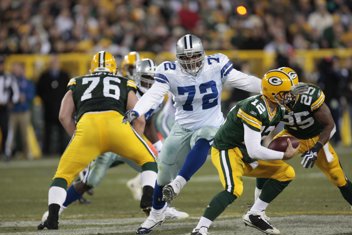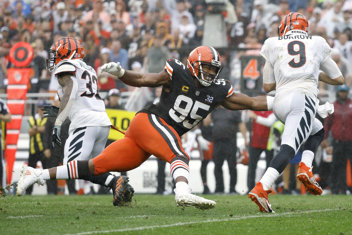Perry Fewell is the NFL’s Senior Vice President of Officiating Administration.
Before joining the Officiating Department in 2020, he coached with seven NFL teams between 1998 and 2019, primarily as a defensive backs coach and defensive coordinator. Fewell served as interim head coach for the Buffalo Bills in 2009 and Carolina Panthers in 2019 and was the New York Giants defensive coordinator for five seasons, including for the Giants’ Super Bowl XLVI victory over the New England Patriots.
From his more than two decades on the sidelines, Fewell shares what a work week looks like for NFL coaching staffs and teams throughout an NFL season.
“This is when you get to find out the talent level of all the new players.”
Training Camp
July – August
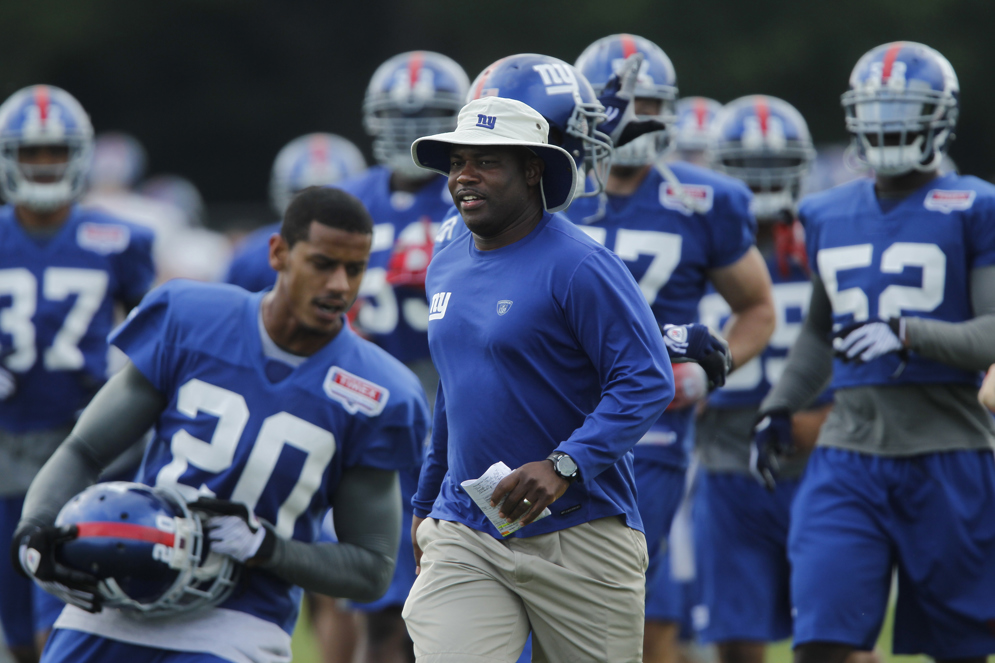
AP/Mike Groll
During these early weeks, coaches start to evaluate the talent across the team during practices, which will eventually play a role in informing future roster cuts.
Full days consist of physical exams, meetings, conditioning tests, classroom instructions and on- field, position-specific drills designed to build players’ knowledge of the basic philosophies of the playbook.
Off the field, coaches meet nightly to critique, correct and evaluate players’ practice performances by reviewing video.
Here’s a look at a typical preseason week, though the dates and process vary from team to team.
Sunday Evening
- Coaches review practice or scrimmage video and meet with the offense, defense, and special teams units. In camp, Sunday nights are available since exhibition games have yet to begin
Monday-Wednesday
- Teams conduct non-padded practices that teach fundamentals like blocking, tackling, and group sessions to cover play-action pass installation and blitz patterns and blitz pick-up
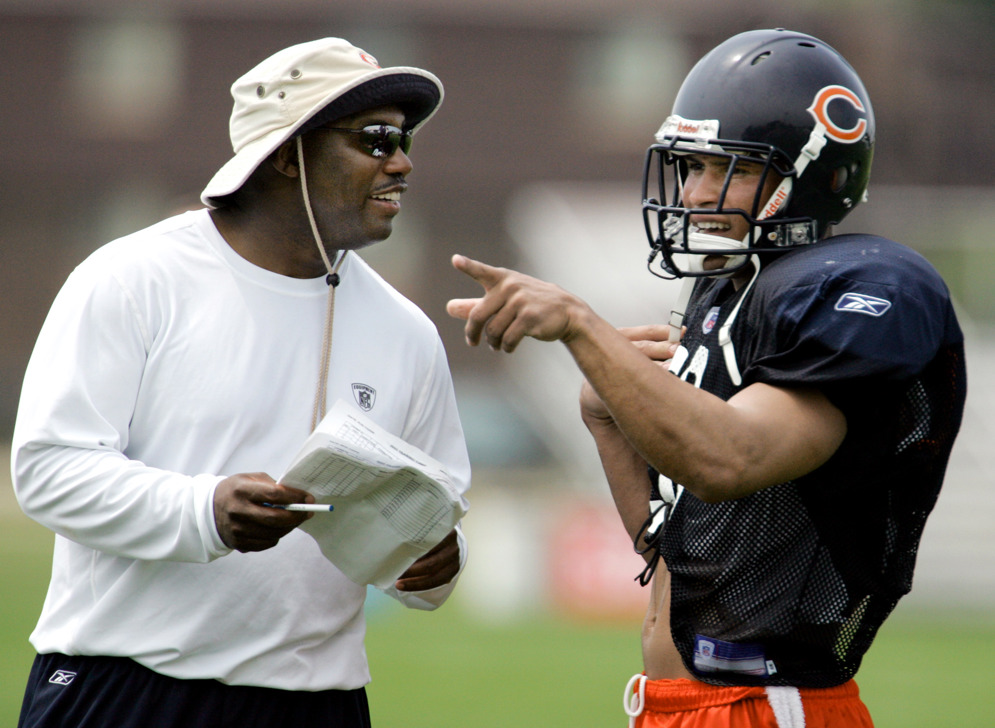
AP/M. Spencer Green
Thursday
- Players are off. Teams are required to have one day off each seven-day week
- Coaches prepare for the following day when players return by reviewing practice video and preparing various personnel packages to simulate game situations like third-down, red-zone and two-minute scenarios
Friday
- Teams conduct padded practice
Saturday-Sunday
- Teams scrimmage throughout the week, focusing on installing plays that have been practiced into the playbook
- Players also have opportunities to connect with family and fans during autograph sessions after the scrimmage
“It’s all about maximum performance and talent evaluation – getting players to play the game and not think the game.”
During preseason, rookies and younger players are closely evaluated, especially in the first two weeks. When they stand out in training camp, they can earn more reps during practices and may even practice with the first-team units. Coaches are looking for standouts to provide them with more exposure.
Week 1
- Coaches focus on talent evaluation as offense versus defense practices continue with a focus on installing the base offense, defense and special teams philosophies
- Players are assigned positions on specific units to learn their assignments to perform on the field
- Players show their mental and physical skills in simulated game situations
Week 2
- Coaches mentally challenge players during practices by slowly installing more plays and adding more details to their assignments
- Players’ competition levels rise as padded practices intensify and players vie to stand out among their teammates and for the coaching staff on the field and in the classroom
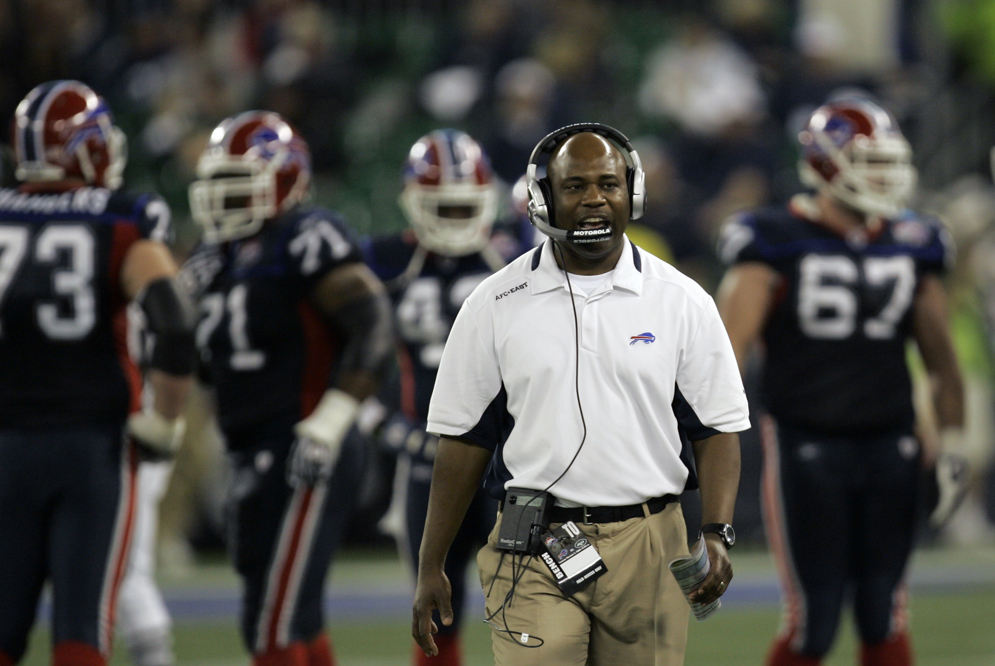
AP/Dean Duprey
Week 3
- Players are introduced to their upcoming opponents through video from the preseason and the previous year with an eye toward identifying the other team’s tendencies
- Coaches game plan for upcoming opponents and may install new plays that will later be implemented during the regular season
- Coaches typically play their starters into the second half of the game – featuring nonstarters and players fighting for a roster spot shortly after
- Coaches and the clubs’ scouting departments evaluate each player’s performance to finalize the roster before Week 1 of the regular season
Regular Season
September – January
Football players are creatures of habit, so during the regular season, coaches try to create a routine and repeat it each week.
The week starts with coaches assessing the team’s overall performance from the previous game. Over the week, the focus turns to the next opponent and coaches drill down into specific details. The number of plays and situations practiced decreases as the coaches and players become more detailed before the next game.
The process includes giving players time to recover from the previous week’s game. On Mondays, as coaches are breaking down film, players are receiving treatment and beginning the process of getting their bodies ready to play again.
“After a win, spirits are high, but after a loss you have to dig in and learn how to regain control.”
Monday (after a Sunday game)
Morning
- Coaches evaluate game film, which helps them develop the upcoming week’s priorities and the overall message for the team
- Players arrive at the facility and receive treatment to begin recovery from Sunday’s game
- Training staff release the injury report, letting coaches know each player’s availability for the week of practices and perhaps even for the next game
Afternoons
- Head coach discusses the team’s performance in their previous game and evaluates whether they met their goals during an all-team meeting
- Players attend position meetings where they receive their grades
Evenings
- Coaches strategize for the next game by studying their upcoming opponent’s film
- Players receive treatment from trainers and continue their conditioning
Tuesday (players’ day off)
Morning
- Coaches study more video to get their strategy ready for the upcoming opponent
- Coaches then bring their ideas and recommendations to the coaches’ game plan meetings
Afternoons
- Coaches finalize aspects of the game plan by drawing first- and second-down plays on cards for the team to run during practice
Evenings
- Coaches continue working on the next game’s strategy
Wednesday (first practice)
- Teams practice in pads for about 120-130 total plays between offense, defense and special teams
Thursday
- Teams practice third-down situations in pads and introduce red-zone and two-minute drills with around 80-90 plays
Friday (Fast Friday)
- Teams practice tight red-zone, short-yardage and goal-line situations without pads — about 45-50 plays — with a focus on speed and precision
Saturday
- Teams practice without pads, running through all possible scenarios — intended to be easier, slower and a lighter practice
- Teams focus on mental preparation so players can physically rest the day before gameday and coaches can run a final review of the plays and game situations they want to implement for Sunday’s game
Sunday – Gameday
“It’s win or go home.”
Postseason
January
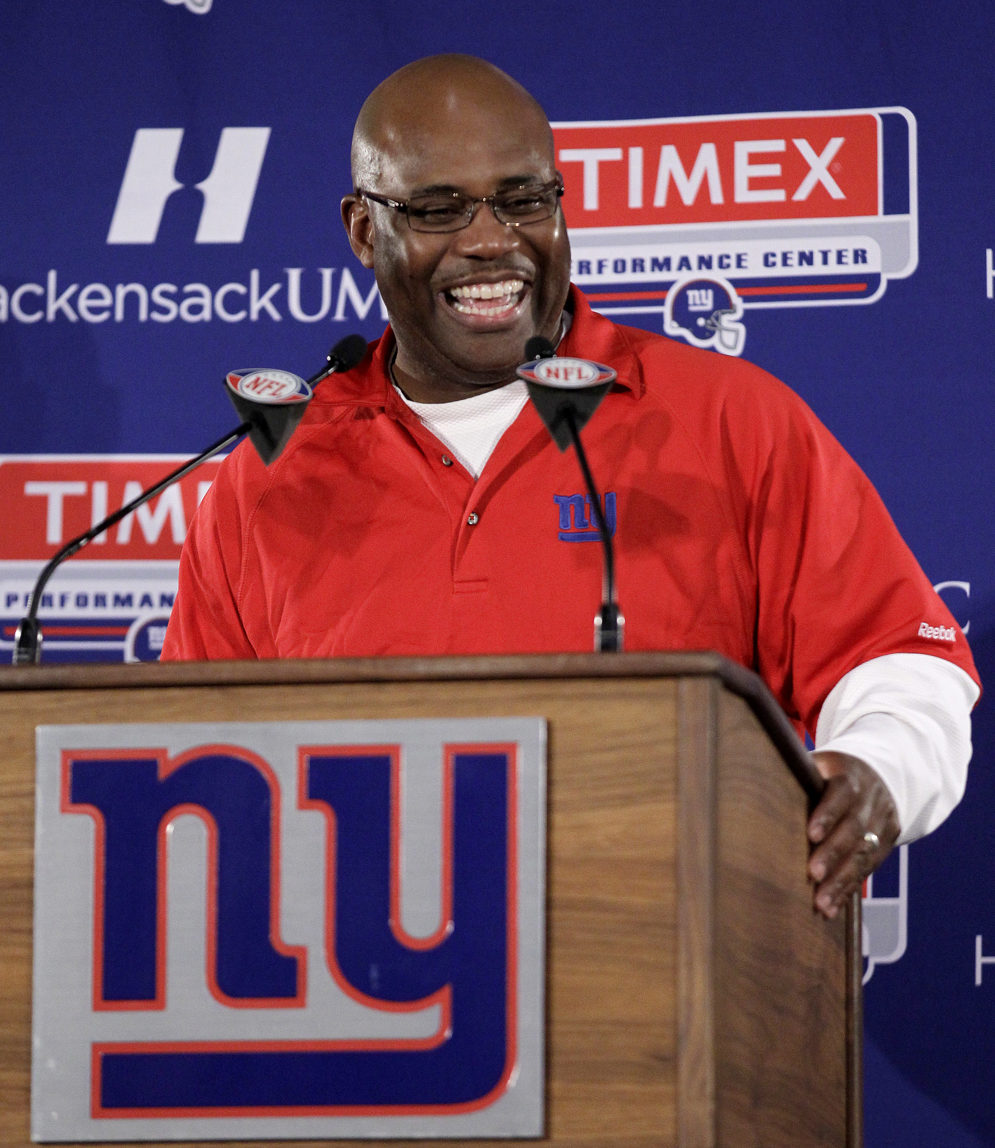
AP/Julio Cortez
In the playoffs, it’s win or go home. There is less of a need for motivational speeches. A good playoff team has developed a bond by this point and their spirits are high. Players tend to elevate their performances in the postseason. The aches and pains collected over the long season are easier to overcome when the team’s collective goal of winning a Super Bowl is in sight.
There is renewed excitement in the locker room. The chance to play playoff football is not guaranteed. Many players never reach the postseason in their career.
The elusive nature of postseason football also makes for some difficult conversations. When a player sustains an injury that keeps him from playing in the playoffs, coaches often are the ones who have to help him come to terms with having to miss out on this opportunity.
In preparing for postseason games, coaches are watching a season’s worth of film and reviewing opponents’ tendencies, strategies and analytics to prepare players for all situations.
Coaches try not to curb the enthusiasm of their young players, but rather redirect their focus into preparation and performance. Keeping the focus becomes increasingly hard as a team advances deeper into the playoffs and outside distractions — like increased media coverage — grow.
“You can easily overprepare and outcoach yourself here.”
Super Bowl
February
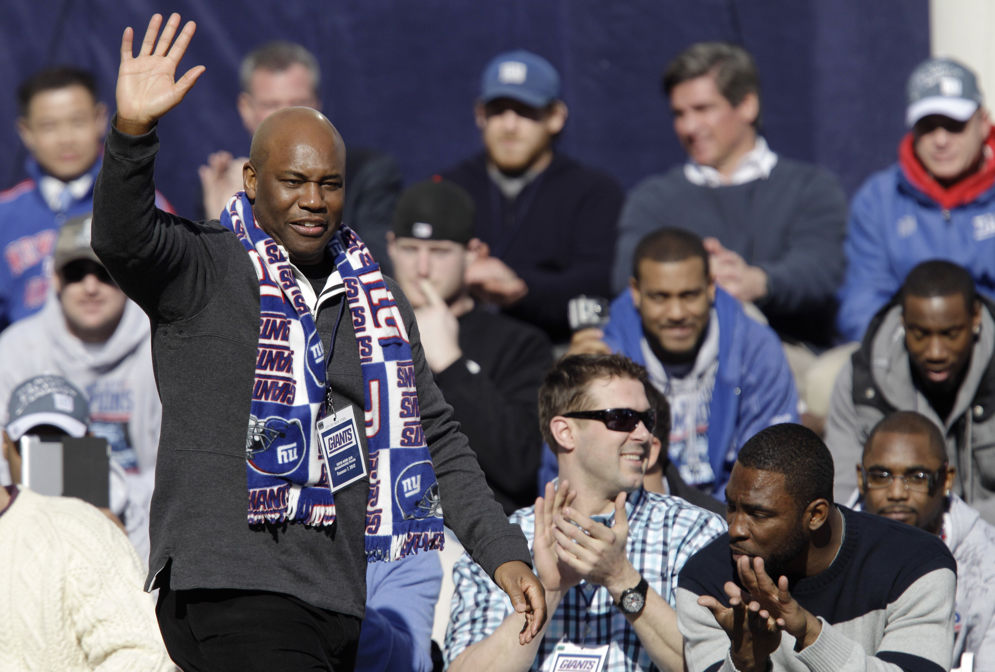
AP/Kathy Willens
Coaches and players spend the two weeks before the Super Bowl by poring over their opponent’s game film and shoring up any areas of concern. Teams keep the same Wednesday through Friday practice schedule to maintain regular-season habits.
But now, there are many more distractions. Travel, media, logistics, and family and friends asking for tickets can sidetrack players. This is why coaches put a strong emphasis on practices the week before the Super Bowl.
Practices during Super Bowl week have a tendency to be without pads to minimize the risk of injury and allow players to recover.
Offseason
February – July
Football is a year-round sport. As soon as one season ends, the next begins. This starts with getting ready for the draft by taking a deeper look at college players with the team’s scouts and getting ready for the National Scouting Combine. After the draft, coaches prepare for free agency and get ready to work with what is now a different team from last season. Coaches spend the offseason reviewing techniques to improve the team through self and system evaluations.
The work never stops and before you know it, it’s time for training camp.
